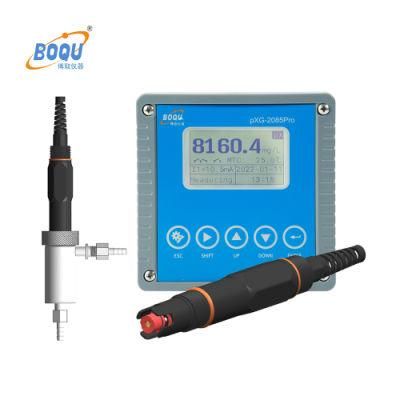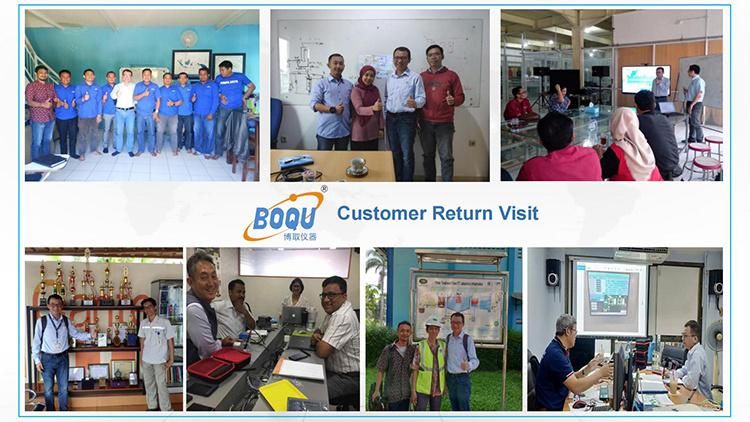
Boqu Pxg-2085PRO Concentration of Calcium Ca2+ in Aqueous Samples Chemistry Online Ca Calcium Ion Sensor Probe Electrode
Shanghai Boqu Instrument Co., Ltd.- After-sales Service:10 Engineers in After Service Department
- Warranty:1 Year
- Display:Digital
- Appliance:Food Analysis, Medical Research, Biochemistry
- Portable:Non Portable
- Certification:RoHS, FCC, CE, ISO9001
Base Info
- Model NO.:PXG-2085Pro
- Name:Pxg-2085PRO Online Ion Meter
- Power:90~260VAC
- Communication:RS485 Modbus
- Signal:4-20mA
- Relays:3 Relays
- Transport Package:Quality Package for International Transport
- Specification:BOQU Instrument production over 100 000pcs,year
- Trademark:BOQU
- Origin:China
- HS Code:9027809990
- Production Capacity:100000PCS,Year
Description
BOQU Contact Industrial Application Company Profile BOQU Exhibition Certifications Visit Customers In order to provide better service for our customers, we will visit customers in different countries. Only in this way, then we could truly understand customer needs and help customers to choose the right water quality analyzers and sensors. FAQ of Best Water Treatment Online Ion Meter FAQ
FAQ
An Ion Selective Electrode measures the potential of a specific ion in solution. (The pH electrode is an ISE for the Hydrogen ion). This potential is measured against a stable reference electrode of constant potential. The potential difference between the two electrodes will depend upon the activity of the specific ion in the solution. This activity is related to the concentration of that specific ion.
2.How do you measure concentration using an ion-selective electrode?
Standard solutions of known concentrations must be accurately prepared. These solutions are then measured with the pH/mV meter. The mV reading of each solution is noted and a graph of concentration vs. mV reading must be plotted. The unknown solution can now be measured. The mV value of the unknown solution is then located on the graph and the corresponding solution concentration is determined. Dedicated ion meters can construct a calibration curve automatically.
3.What is the selectivity coefficient (K) of an ion-selective electrode?
ISEs are not ion-specific. All are sensitive to some other ions to some extent. For many applications, these interferences are insignificant (unless there is a high ratio of interfering ion to primary ion) and can often be ignored. In some extreme cases, however, the electrode is far more sensitive to the interfering ion than to the primary ion and can only be used if the interfering ion is only present in trace quantities or even completely absent. The ability of an ion-selective electrode to distinguish between different ions in the same solution is expressed as the Selectivity Coefficient. If the primary ion for which the electrode is sensitive is A and the interfering ion is B then a selectivity coefficient of 0.1 would mean that the electrode is ten times more sensitive to A than to B. If the coefficient is 1 then the electrode is equally sensitive to both.
